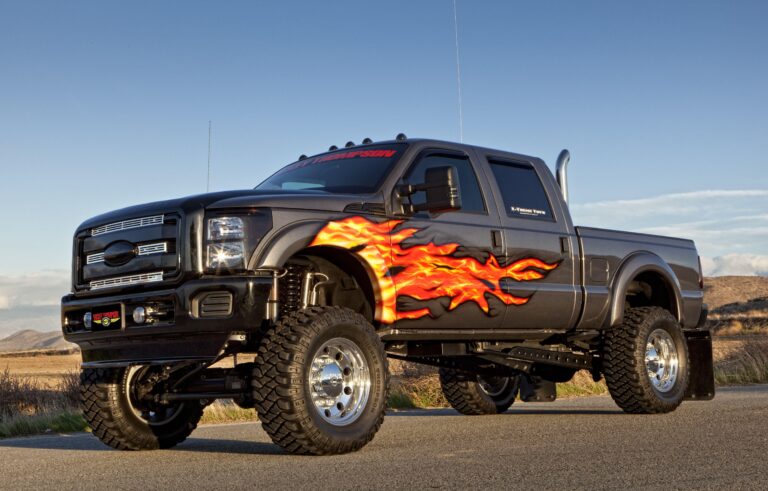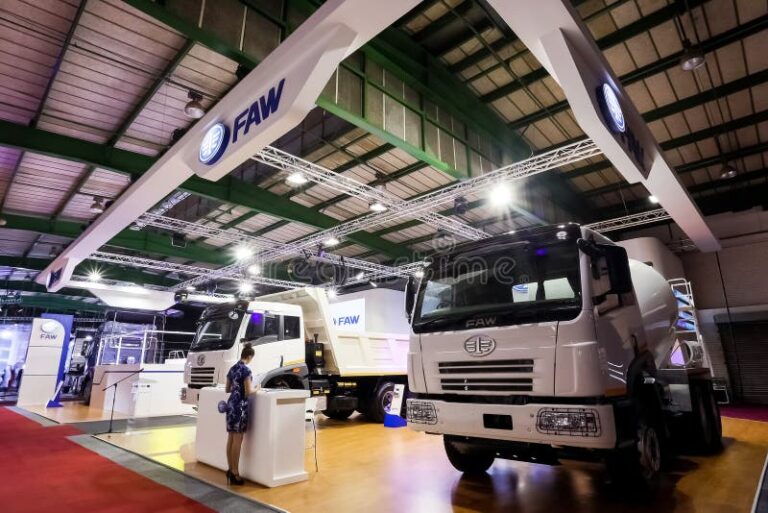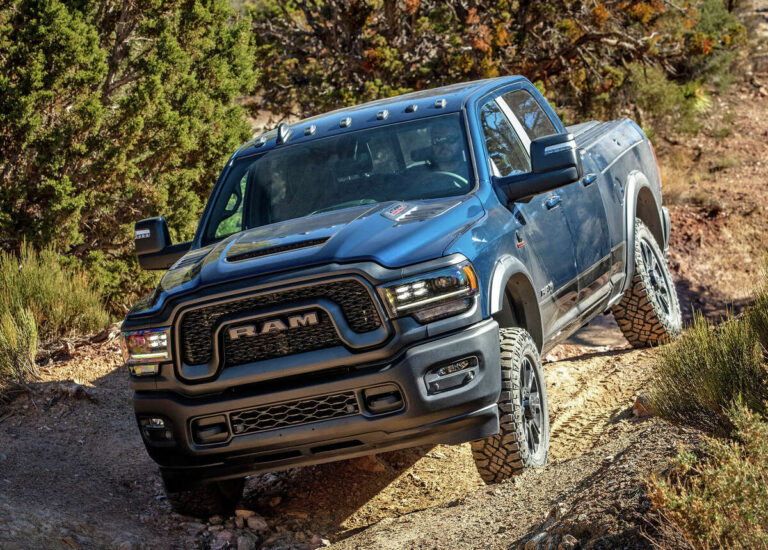Used 1980 Chevy Trucks For Sale: A Comprehensive Buyer’s Guide
Used 1980 Chevy Trucks For Sale: A Comprehensive Buyer’s Guide cars.truckstrend.com
Introduction: The Enduring Appeal of the 1980 Chevy Truck
Few vehicles evoke as much nostalgia, rugged charm, and automotive passion as the 1980 Chevrolet C/K series truck. Part of the iconic "Square Body" generation (1973-1987), the 1980 model year represents a sweet spot for many enthusiasts and practical users alike. These trucks are more than just old vehicles; they are a testament to American engineering, built with a robust simplicity that has ensured their longevity. Whether you’re a seasoned collector, a restoration enthusiast, a weekend warrior needing a reliable hauler, or simply someone looking to relive a piece of automotive history, a used 1980 Chevy truck offers a unique blend of utility, style, and a surprisingly vibrant aftermarket. This comprehensive guide will navigate you through the journey of finding, evaluating, and purchasing your very own piece of Square Body legend.
Used 1980 Chevy Trucks For Sale: A Comprehensive Buyer’s Guide
I. Why a 1980 Chevy Truck? The Enduring Appeal of the Square Body
The "Square Body" moniker, affectionately given to the third-generation C/K trucks, perfectly describes their no-nonsense, boxy aesthetic. The 1980 model year falls right in the middle of this era, benefiting from years of refinement while retaining the classic styling that sets it apart.
- Iconic Design: The clean lines, expansive grille, and unmistakable silhouette make these trucks instantly recognizable and highly desirable. They represent a golden age of American truck design, balancing form and function beautifully.
- Robust Construction: Built on a full frame with heavy-duty components, these trucks were designed to work. Their inherent durability means many examples are still on the road today, capable of handling significant loads and rough terrain.
- Mechanical Simplicity: Unlike modern vehicles laden with complex electronics, the 1980 Chevy trucks are mechanically straightforward. This makes them ideal for DIY enthusiasts, offering relatively easy maintenance and repairs, and a rewarding learning experience for those new to classic vehicles.
- Versatility: From a stripped-down workhorse to a luxurious Silverado, the 1980 C/K series offered a wide range of configurations. This versatility means there’s a Square Body out there for almost any need, whether it’s a dedicated farm truck, a custom showpiece, or a charming daily driver.
- Community and Aftermarket: The Square Body community is vast and passionate. This translates into excellent parts availability, a wealth of knowledge sharing, and numerous online forums and clubs dedicated to these trucks. Finding anything from reproduction body panels to performance upgrades is relatively easy.

II. Key Features and Specifications of the 1980 Chevy Truck
Understanding the variations within the 1980 lineup is crucial for identifying the right truck for your needs.
-
Model Designations:
- C-Series (2WD): C10 (1/2 ton), C20 (3/4 ton), C30 (1 ton). These are rear-wheel-drive trucks, primarily used for street driving and hauling.
- K-Series (4WD): K10 (1/2 ton), K20 (3/4 ton), K30 (1 ton). These four-wheel-drive variants are built for off-road capability and tougher conditions.
- Blazer: A full-size SUV based on the K-series chassis, featuring a removable top.
- Suburban: A larger SUV, also based on the C/K chassis, offering more passenger and cargo capacity.
-
Body Styles:
- Regular Cab: The standard two-door configuration.
- Crew Cab: A four-door option available on C20/K20 and C30/K30 models, offering seating for six.
- Short Bed: Typically 6.5 feet long, popular for aesthetics and maneuverability.
- Long Bed: Typically 8 feet long, favored for hauling capacity.
-
Engine Options: A range of reliable powerplants was available, with the V8s being the most popular:
- Inline-6: 250 cubic inches (ci) – A durable, fuel-efficient (for the era) option.
- Small Block V8s: 305 ci, 350 ci – The most common and versatile engines, known for their reliability and ease of modification.
- Big Block V8s: 400 ci, 454 ci – Offered for heavier-duty applications, providing significant torque and power.
-
Transmission Options:
- Manual: 3-speed or 4-speed options, offering direct engagement and control.
- Automatic: TH350 (Turbo Hydra-Matic 350) and TH400 (Turbo Hydra-Matic 400) – Both are robust and widely serviceable transmissions.
-
Trim Levels: From basic work trucks to more comfortable cruisers:
- Custom Deluxe: The entry-level trim, often without power accessories.
- Scottsdale: A step up, offering more amenities.
- Cheyenne: Added comfort features and styling upgrades.
- Silverado: The top-tier trim, featuring plush interiors, chrome accents, and more power options.
III. Where to Find Used 1980 Chevy Trucks For Sale
The search for your ideal 1980 Chevy truck can be an exciting treasure hunt. Here are the most common places to look:
-
Online Marketplaces:
- eBay Motors: Great for a wide selection, including project trucks and fully restored examples.
- Craigslist/Facebook Marketplace: Excellent for local finds, often from private sellers, which can lead to better deals but require more diligence.
- Classic Car Specific Sites: ClassicCars.com, Hemmings, AutoTrader Classics are geared towards enthusiasts and often feature higher-quality listings.
- Dedicated Forums & Social Media Groups: Square Body forums and Facebook groups are goldmines for trucks for sale, often from knowledgeable owners.
-
Specialty Dealerships: Classic car dealerships or those specializing in vintage trucks often have 1980 Chevy trucks. While prices might be higher, these vehicles are often pre-inspected or restored.
-
Auctions: Live auctions (e.g., Mecum, Barrett-Jackson) or online auction platforms can offer unique opportunities, but be prepared to make quick decisions and understand auction fees.
-
Local Searches: Word-of-mouth, classifieds in local papers, or simply keeping an eye out in rural areas can sometimes lead to unexpected "barn finds" or well-preserved examples from original owners.
IV. What to Look For: A Buyer’s Guide for 1980 Chevy Trucks
Purchasing an older vehicle requires a keen eye and a systematic approach. Here’s a checklist of critical areas to inspect:
-
1. Rust: The Silent Killer: This is the single most important factor. Common rust spots include:
- Cab Corners and Rocker Panels: Look inside and outside.
- Fenders and Wheel Wells: Especially around the tire openings.
- Bed Floor and Inner Fenders: Check underneath the bed mat if present.
- Frame: Inspect the entire frame for excessive surface rust, cracks, or rot, especially near suspension mounting points.
- Floor Pans: Look under the carpet inside the cab.
- Windshield and Rear Window Channels: Water leaks here lead to interior rust.
- Solution: Minor surface rust is manageable; extensive structural rust requires significant, costly repair.
-
2. Engine Condition:
- Leaks: Check for oil, coolant, or power steering fluid leaks.
- Smoke: Blue smoke (oil burning), white smoke (coolant), or black smoke (rich fuel mixture) from the exhaust.
- Noises: Listen for knocks, ticks, or unusual sounds.
- Fluid Levels and Appearance: Check oil and coolant.
- Test Drive: Does it start easily? Does it idle smoothly? Does it accelerate without hesitation?
-
3. Transmission and Drivetrain:
- Automatic: Shifts smoothly through all gears, no slipping.
- Manual: Clutch engages smoothly, no grinding when shifting.
- 4WD (K-models): Engage 4-high and 4-low. Does it engage easily? Any unusual noises?
- Driveshafts/U-joints: Check for play or clunking.
-
4. Suspension and Steering:
- Shocks and Springs: Look for worn components, sagging.
- Bushings: Worn bushings can lead to sloppy handling.
- Steering Play: Excessive play in the steering wheel indicates worn steering box or linkage components.
-
5. Brakes:
- Pedal Feel: Should be firm, not spongy.
- Pulling: Truck should brake straight without pulling to one side.
- Lines: Check for rust or leaks in brake lines.
-
6. Interior Condition:
- Dashpad: Cracks are common.
- Seats: Tears, foam condition.
- Gauges and Electrical: Do all gauges work? Headlights, taillights, turn signals, wipers, heater fan.
- Windows: Do they roll up and down easily?
-
7. Documentation:
- Ensure it’s clear and matches the VIN on the truck.
- Service Records: Any history is a bonus.
-
8. Originality vs. Modifications: Decide if you want a numbers-matching original, a well-maintained driver, or a custom project. Modifications can add value or detract from it, depending on quality and taste.
V. Common Challenges and Solutions
Owning a vintage truck comes with its quirks, but most challenges have well-established solutions.
- Challenge: Rust: As mentioned, pervasive rust is the biggest enemy.
- Solution: For minor rust, DIY repair is possible. For major structural rust, professional bodywork or panel replacement (reproduction panels are available) is necessary. Avoid heavily rusted frames.
- Challenge: Fuel Economy: These trucks were not designed for efficiency.
- Solution: Accept it, or consider an engine swap (e.g., an LS engine from a newer GM vehicle) for vastly improved power and fuel economy, though this sacrifices originality.
- Challenge: Safety Features: Lacking modern airbags, ABS, and crumple zones.
- Solution: Upgrade brakes to discs (if not already), ensure seatbelts are in good condition, and drive defensively.
- Challenge: Parts Availability: While generally good, some specific trim pieces or unique components can be hard to find.
- Solution: Utilize the strong aftermarket for reproduction parts, scour salvage yards, and leverage online Square Body communities for hard-to-find items.
- Challenge: Maintenance: Older vehicles require more frequent checks and preventative maintenance.
- Solution: Learn basic mechanics, invest in a good service manual, and find a trustworthy mechanic familiar with vintage vehicles.
VI. Tips for a Successful Purchase
- Set a Realistic Budget: Factor in not just the purchase price, but also potential repairs, registration, insurance, and ongoing maintenance. A "cheap" truck can quickly become expensive.
- Do Your Research: Understand the different models, common issues, and what a fair price is for a truck in various conditions.
- Inspect Thoroughly: Don’t rush. If you’re not mechanically inclined, hire a pre-purchase inspector who specializes in classic vehicles.
- Test Drive: Drive it on various roads if possible. Listen for noises, feel for vibrations, and check how it handles.
- Negotiate: Most prices are negotiable, especially for private sales. Be prepared to walk away if the deal isn’t right.
- Define Your Purpose: Are you looking for a show truck, a daily driver, or a project? This will significantly influence what kind of truck you should buy and how much you should spend.
Used 1980 Chevy Truck Price Guide
Prices for used 1980 Chevy trucks vary significantly based on condition, model, mileage, originality, modifications, and geographic location. The table below provides a general range, but consider it a starting point for your research.
| Model Type | Condition: Project (Needs Major Work) | Condition: Driver (Good Running, Some Flaws) | Condition: Restored (Excellent, Minor Flaws) | Condition: Show (Concours, Pristine) |
|---|---|---|---|---|
| C10 (2WD) | $2,000 – $7,000 | $8,000 – $18,000 | $19,000 – $35,000 | $35,000 – $70,000+ |
| K10 (4WD) | $3,000 – $9,000 | $10,000 – $22,000 | $23,000 – $45,000 | $45,000 – $80,000+ |
| C20/C30 (2WD) | $1,500 – $6,000 | $7,000 – $16,000 | $17,000 – $30,000 | $30,000 – $60,000+ |
| K20/K30 (4WD) | $2,500 – $8,000 | $9,000 – $19,000 | $20,000 – $40,000 | $40,000 – $75,000+ |
| Blazer | $4,000 – $10,000 | $12,000 – $25,000 | $26,000 – $50,000 | $50,000 – $90,000+ |
| Suburban | $3,000 – $9,000 | $10,000 – $22,000 | $23,000 – $45,000 | $45,000 – $85,000+ |
- Disclaimer: These are broad estimates. A rare configuration, low mileage, celebrity ownership, or highly desirable modifications can significantly push prices higher. Conversely, severe rust or major mechanical issues can drop prices below these ranges. Always inspect thoroughly and get a second opinion.
Frequently Asked Questions (FAQ)
Q1: Are 1980 Chevy trucks reliable?
A1: Yes, they are generally considered very reliable due to their simple mechanical design. With proper maintenance, they can last for many years and miles. However, as with any 40+ year old vehicle, components will wear out and require replacement.
Q2: Are parts hard to find for 1980 Chevy trucks?
A2: No, parts availability is excellent. Due to the popularity of the Square Body trucks, there’s a thriving aftermarket for reproduction parts, and many mechanical components are interchangeable with other GM vehicles of the era. Salvage yards and online communities are also great resources.
Q3: What’s the difference between C and K models?
A3: C models are 2-wheel-drive (2WD), while K models are 4-wheel-drive (4WD). The number after the letter (e.g., C10, K20) indicates the truck’s weight rating (1/2 ton, 3/4 ton, 1 ton, respectively).
Q4: What are common rust spots on a 1980 Chevy truck?
A4: The most common rust spots are the cab corners, rocker panels, floor pans, inner and outer fenders, bed floor, and around the windshield and rear window seals. Always check the frame thoroughly as well.
Q5: Can a 1980 Chevy truck be a daily driver?
A5: Absolutely, many people use them as daily drivers. However, be prepared for less comfort, poorer fuel economy, and fewer modern safety features compared to a contemporary vehicle. Regular maintenance is key.
Q6: Are they good for restoration projects?
A6: Yes, they are highly popular for restoration projects due to their straightforward mechanics, strong community support, and excellent parts availability. They offer a rewarding experience for both amateur and professional restorers.
Conclusion: Driving a Piece of History
Owning a used 1980 Chevy truck is more than just having a mode of transportation; it’s about connecting with a significant piece of American automotive history. These Square Body legends offer a unique blend of rugged capability, classic style, and mechanical simplicity that resonates with a wide audience. While the journey to find the perfect one requires patience and diligence, the rewards—the rumble of a classic V8, the admiring glances, and the satisfaction of driving a truly iconic machine—are immeasurable. With the right research, a thorough inspection, and a clear understanding of your needs, you can confidently embark on the rewarding adventure of owning a 1980 Chevy truck that will turn heads and stand the test of time.





